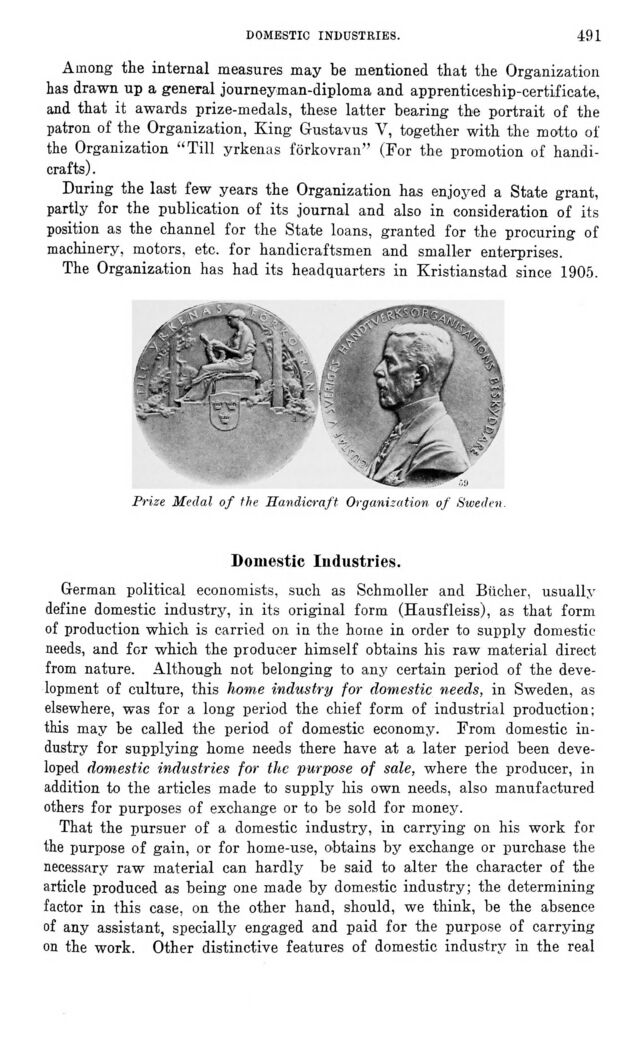
Full resolution (JPEG) - On this page / på denna sida - VII. Manufacturing Industries. Introd. by [G. Sundbärg] K. Åmark - 12. Handicrafts and Domestic Industries. [By A. Raphael] - Handicrafts. By C. J. F. Ljunggren - Domestic Industries. By S. Odén

<< prev. page << föreg. sida << >> nästa sida >> next page >>
Below is the raw OCR text
from the above scanned image.
Do you see an error? Proofread the page now!
Här nedan syns maskintolkade texten från faksimilbilden ovan.
Ser du något fel? Korrekturläs sidan nu!
This page has never been proofread. / Denna sida har aldrig korrekturlästs.
domestic industries.
491
Among the internal measures may be mentioned that the Organization
bas drawn up a general journeyman-diploma and apprenticeship-certificate,
and that it awards prize-medals, these latter bearing the portrait of the
patron of the Organization, King Gustavus V, together with the motto of
the Organization "Till yrkenas förkovran" (For the promotion of
handicrafts) .
During the last few years the Organization has enjoyed a State grant,
partly for the publication of its journal and also in consideration of its
position as the channel for the State loans, granted for the procuring of
machinery, motors, etc. for handicraftsmen and smaller enterprises.
The Organization has had its headquarters in Kristianstad since 1905.
Prize Medal of the Handicraft Organization of Sweden.
Domestic Industries.
German political economists, such as Schmoller and Bucher, usually
define domestic industry, in its original form (Hausfleiss), as that form
of production which is carried on in the home in order to supply domestic
needs, and for which the producer himself obtains his raw material direct
from nature. Although not belonging to any certain period of the
development of culture, this home industry for domestic needs, in Sweden, as
elsewhere, was for a long period the chief form of industrial production;
this may be called the period of domestic economy. From domestic
industry for supplying home needs there have at a later period been
developed domestic industries for the purpose of sale, where the producer, in
addition to the articles made to supply his own needs, also manufactured
others for purposes of exchange or to be sold for money.
That the pursuer of a domestic industry, in carrying on his work for
the purpose of gain, or for home-use, obtains by exchange or purchase the
necessary raw material can hardly be said to alter the character of the
article produced as being one made by domestic industry; the determining
factor in this case, on the other hand, should, we think, be the absence
of any assistant, specially engaged and paid for the purpose of carrying
on the work. Other distinctive features of domestic industry in the real
<< prev. page << föreg. sida << >> nästa sida >> next page >>